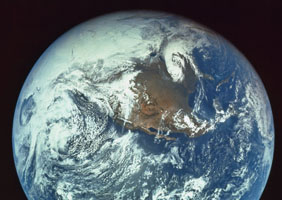Earth & Planetary Science
Overview of the Department
Earth and planetary science covers a wide range of fields, from the solid Earth, atmosphere and oceans, and surface environment including the biosphere, to planets and minor objects in the solar system as well as space beyond the solar system. Moreover, it covers a wide range of time scales, from the evolution of the solar system to the future of the Earth, and from billions of years to hours or less. Diverse research methods are required to study these research fields, including field work, laboratory experiments, theoretical modeling, and simulation. Moreover, recent research aiming to understand the Earth and planets as a large-scale and complex system require interdisciplinary studies and educations based on strong programs in the various disciplines in this science. Another important objective of the department is to contribute directly to the human society through participation in national and international programs of applied research in areas such as global climate change, mitigating catastrophic damage from earthquakes, and various environmental problems facing humanity.
https://www.eps.s.u-tokyo.ac.jp/en/introduction_en/
Descriptions of Major Research Groups
Atmospheric and oceanic science
This group studies oceanic and atmospheric phenomena on a wide range of spatial and temporal scales. Specific topics include small-scale turbulence, internal gravity waves in the troposphere, stratosphere and ocean, eddies and large-scale circulation of the ocean and atmosphere, and their coupling. This group aims to deepen our understanding of the physical processes and, to the greatest extent possible, to enhance our ability to make predictions of these phenomena.
Space and planetary science
We study space physics, magnetospheric physics, observational planetology, comparative planetology, and planetary material science. Japan's commitment and contributions to planetary/lunar/asteroid scientific missions are expanding, and this group's members are playing important roles in these endeavors.
Earth and planetary system science
This group aims to study Earth as well as other planets as a single system comprising closely interacting multiple subsystems, with interaction times varying from seconds to billions of years and with spatial scales from the atomic scale to the distance between planets. We seek to understand the stability, variability, and evolutionary trends of planetary systems and surface environments.
Solid earth science
"Solid Earth" denotes the Earth's crust, mantle, outer core (which is actually fluid) and inner core. Our group seeks to understand the physical and chemical processes operating in these domains, their interactions and how they act to shape the Earth's past, present and future. We use a wide range of techniques to probe the Earth including numerical simulation, laboratory experiments, physical and chemical characterization of natural and experimental material, and geophysical and geological field observations. Our group has particular strengths in deep-earth geodynamics, subduction zone processes, seismology and development of the early earth. The research approaches of our group have applications in fields such as disaster mitigation, development of natural resources, engineering geology and planetary science.
Geosphere and biosphere science
This group studies the formation of geosphere materials, the evolution of the geosphere, the origin and evolution of life, and the fundamental processes of geosphere-biosphere interactions. Our research activities are based on field observation; analysis of geological, mineralogical, and paleontological samples; and laboratory experiments.



